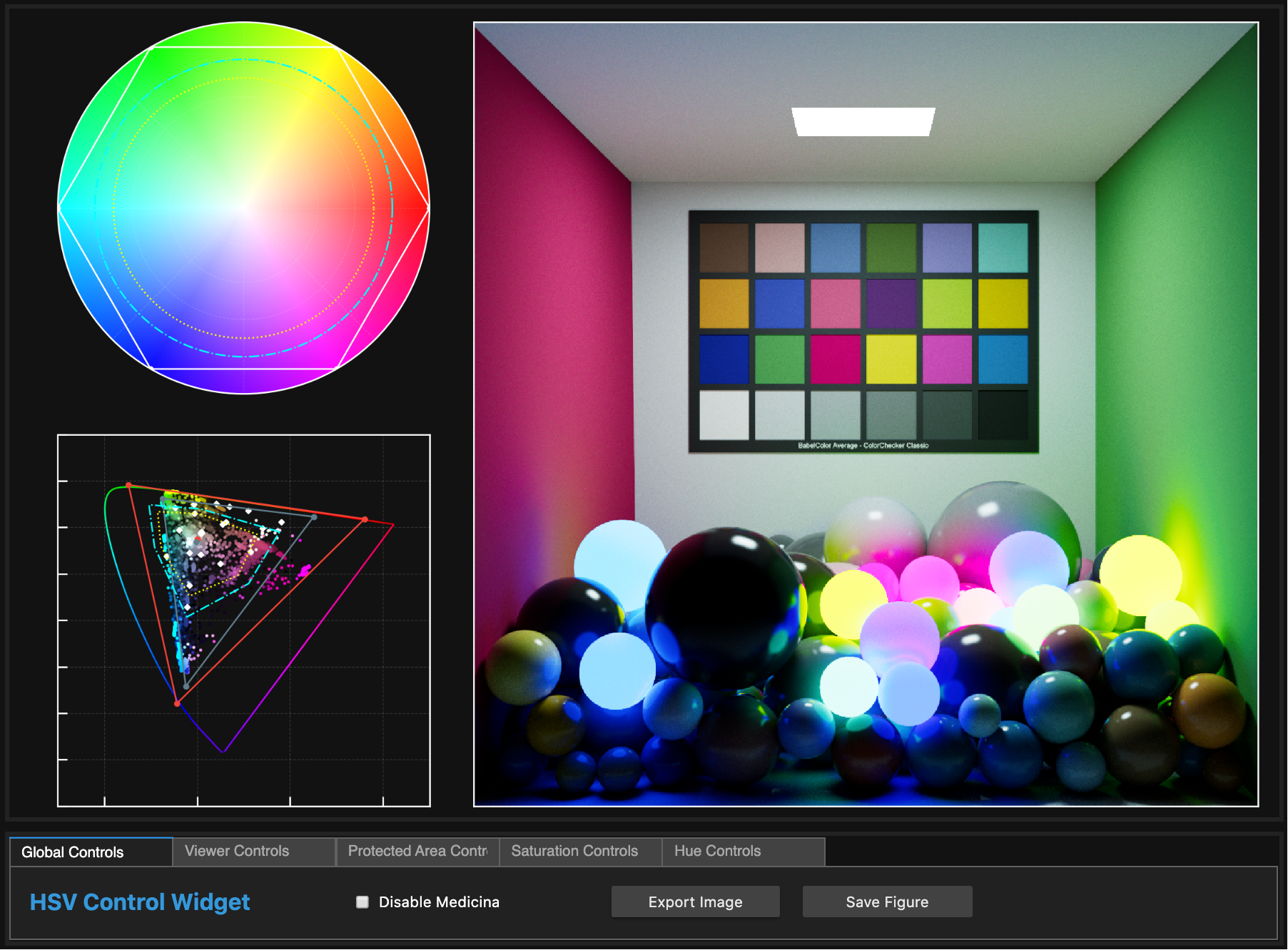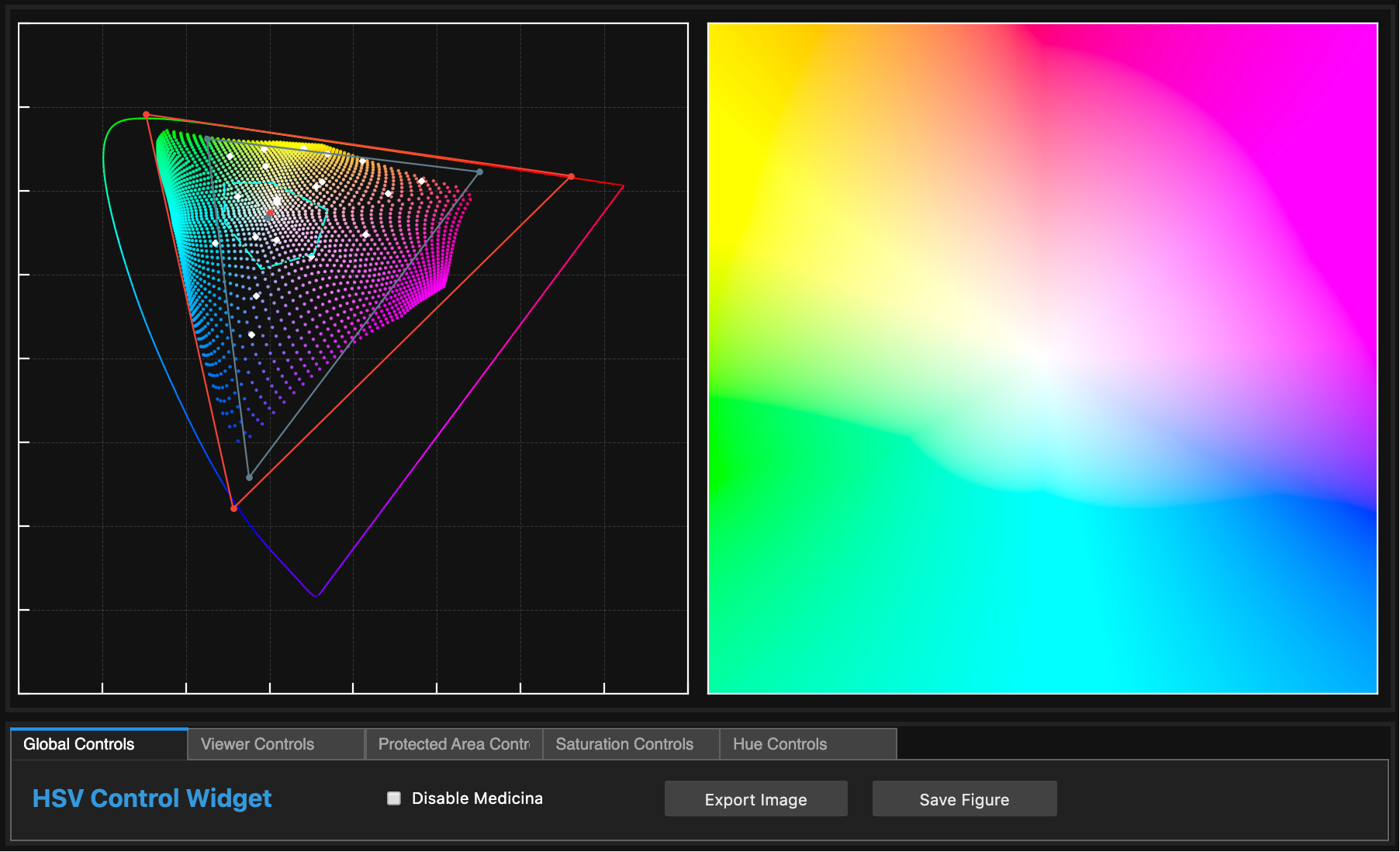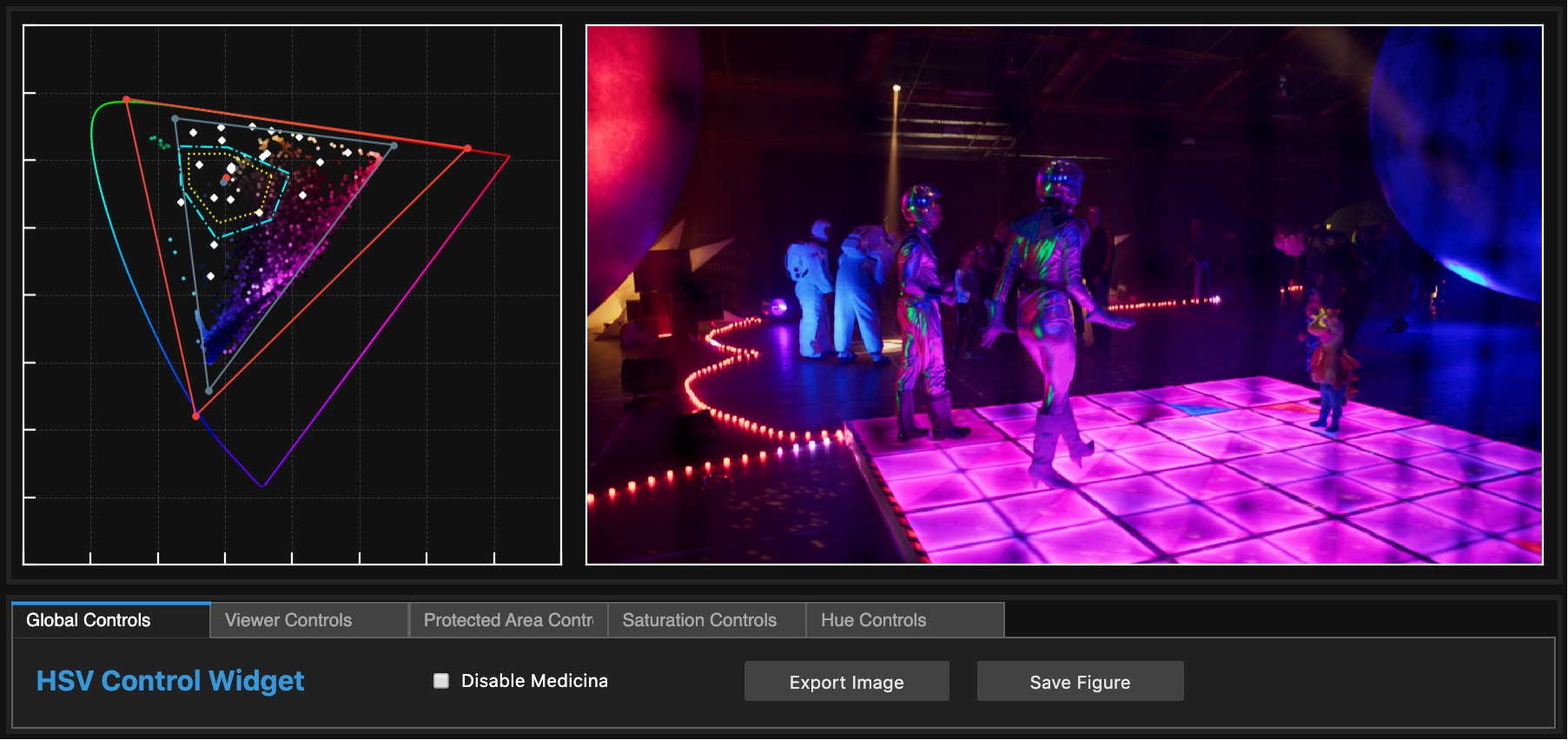
Colour Developers Scientific Plot Entry for John Hunter - Excellence in Plotting - 2020: An interactive Jupyter Widget driving Mansencal and Scharfenberg (2020) HSV Control Based Study Model, and performing gamut mapping on scene-referred synthetic imagery.
The Cornell Box is spectrally rendered with Mitsuba 2: A Retargetable Forward and Inverse (Open Source) Renderer.
Gamut Mapping of Scene-Referred Light Values
The Academy Color Encoding System (ACES) is a free, open, device-independent color management and image interchange system used in the production of movies, series and games. ACES adoption has increased during the last decade and the system is becoming a successful standard in the Media and Entertainment Industry. However, amid of the growing success, ACES users are frequently reporting defects occurring on their imagery while using the system.
The artefacts are often generated by digital still or motion-picture cameras: their spectral sensitivities do not satisfy the Maxwell-Ives criterion (Luther condition). Put another way, they are not colorimetric and capture the world differently than the Standard Observer, i.e. a standardised average human viewer. Ultimately, they produce non-physically realisable values outside the Spectral Locus, i.e. the volume bounding the extent of the Standard Observer sensitivity to the electro-magnetic spectrum. Colour grading tools used to infuse the creative vision into the imagery are also source of defect generation.

The 1976 UCS Chromaticity Diagram on the left highlights particularly well the non-colorimetric behaviour of the Canon EOS 5D Mark II. The Spectral Locus is represented by the largest colour-varying and rounded triangle. The red triangle defines the primaries of the standard ACES RGB working colourspace, i.e. ACES AP1, and the gray triangle that of the display colourspace, i.e. sRGB.
Note how the astronaut suits, and the luminous tiles on the floor, whose colours are outside of the Spectral Locus, are looking posterised.
In the context of this document, and the portion of interest of the ACES pipeline, the imagery is said to be in a scene-referred state. A scene-referred image encodes light values as they were captured at the camera focal plane in a given scene. The encoded values are intrinsically linear, and proportional, relatively, to the incident light from the scene to the camera.
The A.M.P.A.S formed a new Virtual Working Group with the objective of finding strategies to manage and correct the artefacts. The Working Group is researching a source-agnostic model that performs the mapping of scene-referred light values from any source, i.e. any light capturing device, irrespective of its sensitivities, to a target RGB colourspace primaries, e.g. ACES AP1.
As a contribution to the initiative, the Colour Developers have designed and built an interactive Jupyter Widget to explore the problem space. The widget leverages Colour, an open-source Python package providing a comprehensive number of algorithms and datasets for colour science, and Matplotlib.
As of this writing, the widget implements two gamut mapping study models via sub-classes:
- Mansencal and Scharfenberg (2020) HSV Control Based Study Model built on top of the HSV colourspace
- Smith (2020) - RGB Saturation Study Model built on top of the RGB colourspace

Mansencal and Scharfenberg (2020) HSV Control Based Study Model compared with Smith (2020) RGB Saturation Study Model. Out of the box, Smith (2020) model produces less hue clumping and more pleasing output. It is also simpler, faster and more elegant but lacks hue twists controls.

Mansencal and Scharfenberg (2020) HSV Control Based Study Model applied onto a photograph.
While being order of magnitude slower than commercial applications such as Davinci Resolve or The Foundry Nuke, the interactive widget is extremely useful as it allows to tap directly into the entire Python scientific ecosystem while promoting Open Source Software and reproducible research.
More information is available on the colour-science's Gamut Mapping Ramblings repository and ACESCentral.
Copyright © 2020 – Colour Developers – colour-developers@colour-science.org